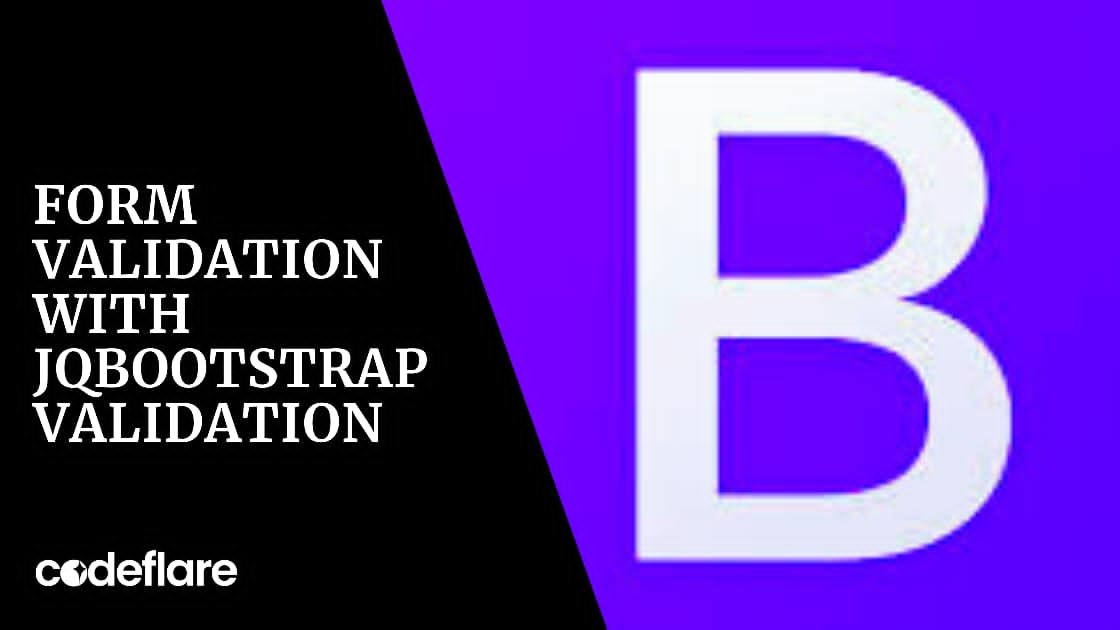
When building interactive web applications, form validation is a critical component. It ensures that users provide the correct type of data, enhances user experience, and helps prevent errors. One of the powerful tools for handling form validation in web projects is jqBootstrapValidation. This jQuery plugin simplifies the validation process and integrates seamlessly with Bootstrap forms, making it an excellent choice for developers.
What is jqBootstrapValidation?
jqBootstrapValidation is a jQuery plugin that extends the capabilities of Bootstrap forms by providing robust client-side validation. It allows developers to easily add validation rules and error messages to form fields, ensuring that user input meets specific criteria before submission. The plugin is built on top of the popular Bootstrap framework, which means it leverages Bootstrap’s styling and responsiveness.
Key Features of jqBootstrapValidation
- Seamless Integration with Bootstrap: jqBootstrapValidation is designed to work effortlessly with Bootstrap forms. It utilizes Bootstrap’s form classes and styles to provide a consistent look and feel.
- Comprehensive Validation Options: The plugin supports a wide range of validation rules, including required fields, email format, URL format, and custom validation rules. This flexibility allows developers to tailor the validation logic to their specific needs.
- Real-Time Feedback: jqBootstrapValidation provides immediate feedback to users as they interact with form fields. This real-time validation helps users correct errors as they go, reducing frustration and improving form submission accuracy.
- Customizable Error Messages: Developers can easily customize error messages for each validation rule. This feature ensures that error messages are clear and relevant to the specific validation issue.
- Cross-Browser Compatibility: The plugin is compatible with all modern browsers, ensuring a consistent user experience across different platforms.
Getting Started with jqBootstrapValidation
To integrate jqBootstrapValidation into your project, follow these simple steps:
- Include Required Files: Ensure you have included jQuery, Bootstrap, and jqBootstrapValidation in your HTML file. You can include them via CDN or download the files and host them locally.
<link rel="stylesheet" href="https://maxcdn.bootstrapcdn.com/bootstrap/3.3.7/css/bootstrap.min.css">
<script src="https://ajax.googleapis.com/ajax/libs/jquery/3.5.1/jquery.min.js"></script>
<script src="https://maxcdn.bootstrapcdn.com/bootstrap/3.3.7/js/bootstrap.min.js"></script>
<script src="https://cdnjs.cloudflare.com/ajax/libs/jquery-validate/1.19.3/jquery.validate.min.js"></script>
<script src="https://cdnjs.cloudflare.com/ajax/libs/jquery-validate/1.19.3/additional-methods.min.js"></script>
<script src="https://cdnjs.cloudflare.com/ajax/libs/jqBootstrapValidation/1.14.0/jqBootstrapValidation.min.js"></script>
2. Create Your Form: Build your form using Bootstrap classes to ensure proper styling and layout.
<form id="contactForm" novalidate>
<div class="form-group">
<label for="name">Name</label>
<input type="text" class="form-control" id="name" name="name" required>
<p class="help-block"></p>
</div>
<div class="form-group">
<label for="email">Email</label>
<input type="email" class="form-control" id="email" name="email" required>
<p class="help-block"></p>
</div>
<button type="submit" class="btn btn-primary">Submit</button>
</form>
3. Initialize jqBootstrapValidation: Use JavaScript to initialize jqBootstrapValidation and define validation rules.
$(function() {
$("input, textarea").jqBootstrapValidation({
preventSubmit: true,
submitError: function($form, event, errors) {
// Handle the submit error
},
submitSuccess: function($form, event) {
// Handle the submit success
alert("Form submitted successfully!");
},
filter: function() {
return $(this).is(":visible");
}
});
});
4. Customize Validation Rules and Messages: You can define custom validation rules and messages to fit your needs.
$.validator.addMethod("customEmail", function(value, element) {
return this.optional(element) || /^[^\s@]+@[^\s@]+\.[^\s@]+$/.test(value);
}, "Please enter a valid email address.");
$("input[name='email']").rules("add", {
customEmail: true
});
Conclusion
jqBootstrapValidation is a powerful tool that enhances form validation in web applications. Its seamless integration with Bootstrap, comprehensive validation options, and real-time feedback make it an invaluable resource for developers. By following the steps outlined above, you can quickly implement jqBootstrapValidation in your projects and ensure a smooth and error-free user experience.
Understanding JavaScript XML (JSX)



